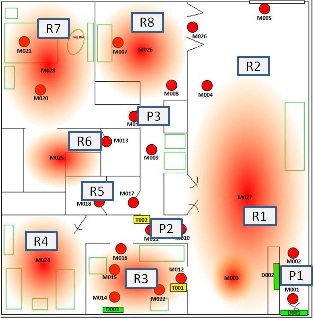
Sensor Activity Prediction in Smart Homes
Contact
Members
Dr. Sethuraman "Panch" Panchanathan
Dr. Sethuraman "Panch" Panchanathan
Smart Homes are equipped with several sensors and one set of useful sensors are activation sensors that give out On/Off information as and when a resident passes by. The frequency with which these sensors may get fired depends on the activity of the smart home resident. Thus by effectively predicting the frequencies of sensor firings during a given interval of time in a day, the resident's living patterns and activities can be recognized and tracked. The prediction of frequencies of sensor firings is also helpful in optimizing the utilization of sensors in a smart home at various points of time. Due to the inherent On/Off data produced by activation sensors, this data can be modeled using counting processes. This project is about modeling sensor events using Stochastic process like Poisson processes, Continuous time Markov Chains etc. As the resident goes about with his daily routines, the various event firing patterns that are extracted are clustered by various similarity measures using steady state distributions and frequency distributions.
The goal of this project is to create an activity prediction and tracking framework for a smart home by just using the data from the activation sensors. As a part of this project the applicability of stochastic processes to the areas of activity prediction and recognition is also being studied. The CASAS Smart Home data from Washington State University, is being used to validate the models developed in this project. The picture to the left is the layout of Milan home which is one of the smart homes at WSU, whose data is being used for this study.




